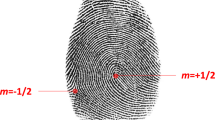Abstract
We extend the recent formulation of the Ewald sum for electrostatics in a two-dimensionally periodic three-dimensional multi- atom layer or two-dimensional single-atom layer system with a rectangular periodic boundary condition (J Chem Theory Comput, 2014, 10: 534–542) to that with a parallelogrammic periodic boundary condition in general. Following the discussion of an efficient implementation of the formula, we suggest a simple setup of parameters using a relatively smaller screening factor and the associated larger real space cutoff distance to reach an optimized algorithm of an order N computational cost. The connection between the previous application of the Ewald sum to ionic crystal systems and the future application to molecular self-assembly or disassembly systems on solid surfaces or at liquid-liquid interfaces are illustrated to demonstrate the applicability of the present work to simulate the self-assembly process and to produce dynamical, structural and thermodynamic properties of experimental self-assembly systems of interest.
Similar content being viewed by others
References
Service RF. How far can we push chemical self-assembly. Science, 2005, 309: 95
Wang Y, Lin H, Ding S, Liu D, Chen L, Lei Z, Fan F, Tian Z. Some thoughts about controllable assembly (i)-from catalysis to cassemblysis. Sci Sin Chim, 2012, 42: 525–547
Zhao YH, Hu ZH. Graphene in ionic liquids: Collective van der waals interaction and hindrance of self-assembly pathway. J Phys Chem B, 2013, 117: 10540–10547
Ewald PP. Evaluation of optical and electrostaic lattice potentials. Ann Phys Leipzig, 1921, 64: 253–287
Darden T, York D, Pedersen L. Particle mesh ewald: An n log(n) method for ewald sums in large systems. J Chem Phys, 1993, 98: 10089–10092
Essmann U, Perera L, Berkowitz ML, Darden T, Lee H, Pedersen LG. A smooth particle mesh ewald method. J Chem Phys, 1995, 103: 8577–8593
Gutzler R, Sirtl T, Dienstmaier JF, Mahata K, Heckl WM, Schmittel M, Lackinger M. Reversible phase transitions in self-assembled monolayers at the liquidolid interface: temperature-controlled opening and closing of nanopores. J Am Chem Soc, 2010, 132: 5084–5090
Barber M, Heyes DM, Clarke JHR. Molecular dynamics computer simulation of surface properties of crystalline potassium chloride. J Chem Soc, Faraday Trans. II: Mol Chem Phys, 1977, 73: 1485–1496
De Leeuw SW, Perram JW. Electrostatic lattice sums for semi-infinite lattices. Mol Phys, 1979, 37: 1313–1322
Weeks JD. Connecting local structure to interface formation: A molecular scale van der waals theory of nonuniform liquids. Ann Rev Phys Chem, 2002, 53: 533–562
Chen Y-G, Kaur C, Weeks JD. Connecting systems with short and long ranged interactions: local molecular field theory for ionic fluids. J Phys Chem B, 2004, 108: 19874–19884
Chen Y-G, Weeks JD. Local molecular field theory for effective attractions between like charged objects in systems with strong Coulomb interactions. Proc Natl Acad Sci USA, 2006, 103: 7560–7565
Rodgers JM, Kaur C, Chen Y-G, and John D. JD. Attraction between like-charged walls: short-ranged simulations using local molecular field theory. Phy Rev Lett, 2006, 97: 097801
Rodgers JM, Weeks JD. Interplay of local hydrogen-bonding and long-ranged dipolar forces in simulations of confined water. Proc Natl Acad Sci USA, 2008, 105: 19136–19141
Rodgers JM. Ph.D. Thesis, The University of Maryland, 2008.
Denesyuk N, Weeks JD. A new approach for efficient simulation of Coulomb interactions in ionic fluids. J Chem Phys, 2008, 128: 124109
Hu ZH, Weeks JD. Efficient solutions of self-consistent mean field equations for dewetting and electrostatics in nonuniform liquids. Phys Rev Lett, 2010, 105: 140602
Rodgers JM, Zhonghan Hu ZH, Weeks JD. On the efficient and accurate short-ranged simulations of uniform polar molecular liquids. Mol Phys, 2011, 109: 1195–1211
Remsing RC, Weeks JD. Deconstructing classical water models at interfaces and in bulk. J Stat Phys, 2011, 145: 313–334
Remsing RC, Weeks JD. Dissecting hydrophobic hydration and association. J Phys Chem B, 2013, 117: 15479–15491
Hautman J, Klein ML. An ewald summation method for planar surfaces and interfaces. Mol Phys, 1992, 75: 379–395
Yeh I-C, Berkowitz ML. Ewald summation for systems with slab geometry. J Chem Phys, 1999, 111: 3155–3162
Arnold A, de Joannis J, Holm C. Electrostatics in periodic slab geometries. I. J Chem Phys, 2002, 117: 2496–2502
Mináry P, Tuckerman ME, Pihakari KA, Martyna GJ. A new reciprocal space based treatment of long range interactions on surfaces. J Chem Phys, 2002, 116: 5351–5362
Smith ER. Electrostatic potentials in systems periodic in one, two, and three dimensions. J Chem Phys, 2008, 128: 174104
Lindbo D, Tornberg A-K. Fast and spectrally accurate ewald summation for 2-periodic electrostatic systems. J Chem Phys, 2012, 136: 164111
Pan C, Hu ZH. Rigorous error bounds for ewald summation of electrostatics at planar interfaces. J Chem Theory Comput, 2014, 10: 534–542
Smith ER. Electrostatic energy in ionic crystals. Proc R Soc London, Ser A: Math Phys Sci, 1981, 375: 475
Arnold A, Holm C. Mmm2d: A fast and accurate summation method for electrostatic interactions in 2D slab geometries. Comput Phys Commun, 2002, 148: 327–348
Author information
Authors and Affiliations
Corresponding author
Rights and permissions
About this article
Cite this article
Pan, C., Hu, Z. Optimized Ewald sum for electrostatics in molecular self-assembly systems at interfaces. Sci. China Chem. 58, 1044–1050 (2015). https://doi.org/10.1007/s11426-014-5303-8
Received:
Accepted:
Published:
Issue Date:
DOI: https://doi.org/10.1007/s11426-014-5303-8




